What’s the Problem with Ethereum? What Does the Future Hold?

The market seems to be gripped by a fear that Ethereum may be in its death throes and various ICO projects, such as DigixDAO and Cobinhood are liquidating their Ethereum holdings. These ICOs have to sell to cover their development funds etc, by why should they all choose to sell so much at once? Are they concerned that they’re holding on to an obsolete and depreciating asset?
Some believe that Ethereum will still achieve an ATH, that Ethereum is here to stay, its fundamentals are good and it will prove to be a good buy down in the bear pit.
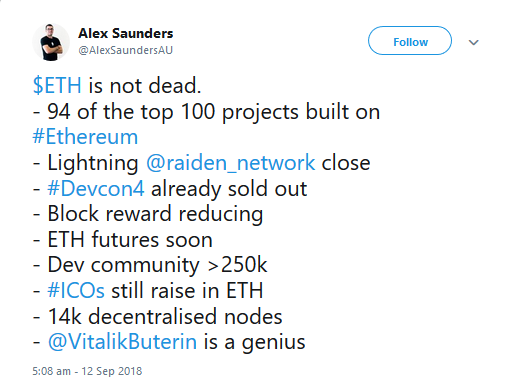
There has been much wailing and gnashing of teeth by the Ethereum community on social media, as they see concerted manipulation on the back of the ICO sell-offs that was also fueling the price decline, with Arthur Hayes, Bitmex CEO, advising his customers to make the most of the Ethereum bloodbath by shorting ETH/USD with leverage and that they “never need to touch that sh**coin called Ether”
Leveraging on this scale has naturally created significant selling pressure, as the shorts have stacked-up and Ethereum would now have to retrace back to the $200 resistance- level to ease this selling pressure.

Ethereum now has some serious competition, from the likes of Skycoin & EOS. Businesses and ICOs need to know that technology of the blockchain they are using is scalable and sustainable. Perhaps, as many as suggesting, sentiment is shifting away from Ethereum to EOS and they point at the charts as evidence of this? Although, considering the Ethereum sell-off, this chart wasn't too much of a surprise.
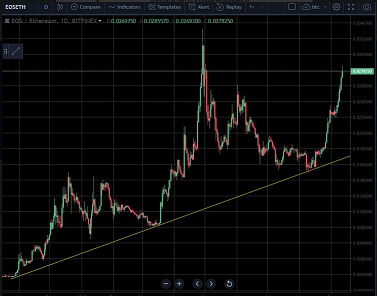
As we know, Ethereum has capacity problems and its scalability doesn’t compare favourably to many others, as demonstrated by the Block’tivity Activity Matrix;
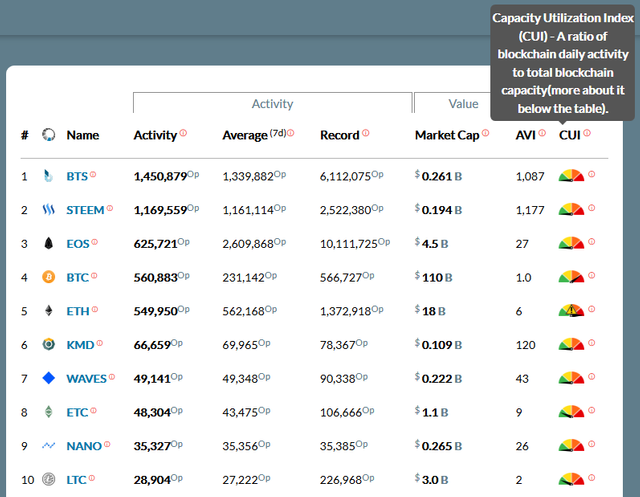
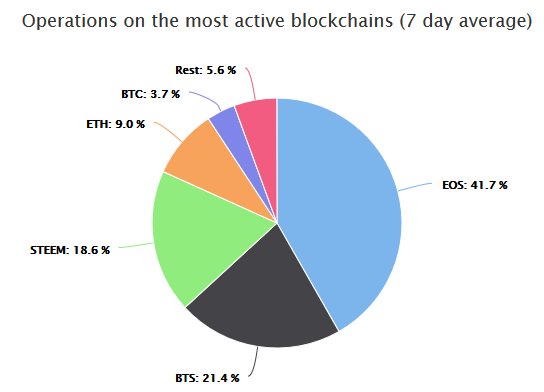

Ethereum faces challenges; the hashrate must be reduced to make mining less difficult and more profitable, as miners search for transactions to process with higher commissions, whilst lower commission transactions can accumulate and this needs to be fairer and more balanced.
Vitalik Buterin is considering a number of combined ways to improve scalability and here follows a brief overview of these with sources provided at the bottom of this post for those who require more detail;
Sharding;
A layer 1 solution, which separates the blockchain into sections, processing transactions independently of each-other. News came this week that Ethereum developers are making progress on sharding, but that it's "not even close to being production ready."

Plasma;
Plasma is a Layer 2 protocol, which essentially consists of the mainnet and many ‘child’ sub-chains forming their own consensus network, rather than PoW, and interacting with the parent mainnet to send updates, if required, whilst also having the ability to form their own sub-chains. Plasma would significantly lower fees and it is claimed that Ethereum’s tps would be in the millions.

Casper;
Casper is the face of Plasma and it is an intermediate step in the process of shifting Ethereum form a PoW to PoS, which is a fairer and more balanced method that makes Ethereum less dependent on miners and more decentralized. It does not depend on a computer’s processing power, as the user stakes their wealth and becomes validator, creating and distributing blocks, considerably increasing the transaction speed.
The Raiden Network, is a scaling solution consisting of off-chain and side-chain near-instant payment solutions for micro-transactions that don't bloat the mainnet itself, often compared to Bitcoin’s Lightning Network. Progress on the Raiden Network has gone quiet, at times, but it may arrive in early to mid 2019. The Liquidity Network is competing to achieve the same.
It seems Ethereum has reached a roadblock, until these solutions are implemented, but rumours of Ethereum’s death are much exaggerated.

https://www.fxstreet.com/cryptocurrencies/news/ethereum-leads-another-crypto-carnage-is-bitmex-behind-the-fall-201809121405
https://blocktivity.info/
https://medium.com/l4-media/making-sense-of-ethereums-layer-2-scaling-solutions-state-channels-plasma-and-truebit-22cb40dcc2f4
https://www.coindesk.com/ethereums-vlad-zamfir-claims-breakthrough-in-blockchain-sharding/
https://raiden.network/101.html
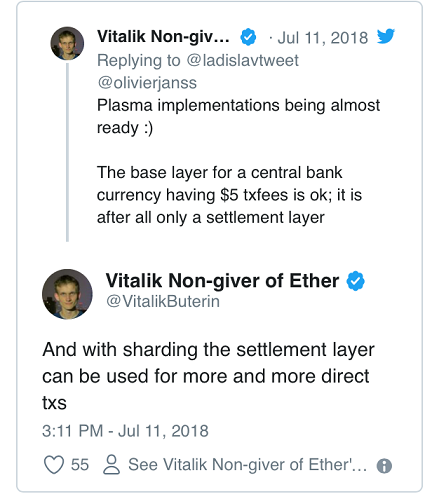
It is nothing more than the market sentiment playing through. Yes a lot of projects in ICO stage, sold their ETH and the price got lower, but this is always going to happen, cant grow a business with crypto, they need fiat. ETH will rise again soon, Still by far the most popular blockchain out there for launching projects on, once they solve scalability then its off to the moon again
ICOs have to liquidate their Ethereum warchests at some point as they need to fund their companies and pay staff. This would not occur if cryptos were accepted on the high street more often. As such it is not market sentiment but a dumb fund-raising model (the ICO) that is at fault.
They have to use use their ICO funds, but as they are sold people are buying. Cryptos are a long long way off being accepted on a large scale, let’s not kid ourselves. People seem to think cryptos are going to solve everything and be accepted by the end of the year. I am a huge believer in blockchain technology but also am a realist and see this taking years more to be accepted, regulation will come first. I agree that more has to be done to target the Ico model at present, but you can’t blame businesses from taking advantage of the process and easy money.
Scalability and getting real world data into the BlockcHain. Take a look at hyperledger
Posted using Partiko Android
Hyperledger lost out to Hedera in their bid for a private DL for all the Credit Unions in the USA.
There are two main problems.
Ethereum was an amazing project and deserves a place in history but developers should move on and use the knowledge they have learned from it to produce something better. Something they can design from the ground up. An EOS killer, IOTA killer, Red Belly killer or whatever they consider to be the current state of the art.
Interesting, but the problem is that walking away from Ethereum wouldn’t inspire much confidence is the next project, or Buterin’s ability to solve problems. People will wonder how long will he stick around for next time. If they started again with a state of the art project, an EOS killer etc, then further down the line something else would come along to kill that, so they would be better off pursuing ways to make Ethereum scale. We have learnt that EOS has bugs in some Dapps and they say this has been resolved, but we’ll have to wait and see. PM what you think about that.
PMed on discord